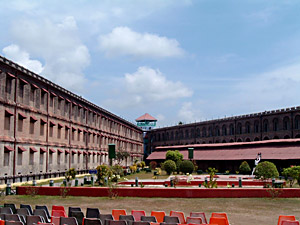 Communist Consolidation is regarded as an Indian communist organisation. This establishment was formed by the prisoners of the Andaman Cellular Jail. 39 inmates of the jail established this organisation on 26th April 1935. The founding members were initially associated with the pro-Marxist section of the Anushilan Samiti. A bulk of the countrywide Anushilan marxist inclination however did not trust the Communist Party enough to join it. Communist Consolidation initiated in organising a May Day celebration in 1935. They started publishing a hand-written magazine, The Call.
Communist Consolidation is regarded as an Indian communist organisation. This establishment was formed by the prisoners of the Andaman Cellular Jail. 39 inmates of the jail established this organisation on 26th April 1935. The founding members were initially associated with the pro-Marxist section of the Anushilan Samiti. A bulk of the countrywide Anushilan marxist inclination however did not trust the Communist Party enough to join it. Communist Consolidation initiated in organising a May Day celebration in 1935. They started publishing a hand-written magazine, The Call.
Shortly, membership of the organisation expanded to nearly 200-500. Shiv Verma (an associate of Bhagat Singh, later became CPI(M) leader in Uttar Pradesh), Hare Krishna Konar (later became a founding leader of CPI(M)), Biplabi Dhrubesh Chattopadhyay (who was sentenced to 7 years imprisonment as he was found guilty in connection with the Dakhineswar Bomb Case), Ananta Chakravorty (a Jugantar party member, also sentenced for the Conspiracy and Bomb Case), Nalini Das (a Jugantar party member, sentenced for the Mechua Bazar Bomb Case), Fakir Sen and Jibendra Das (an Anushilan revolutionary from Tripura) were the praiseworthy members of the Communist Consolidation group.



















